 There are seemingly endless tips for time management, but Vicky-Marie Addo-Ashong ’20 and Andrew Phillips ’19 seem to have found a novel one.
There are seemingly endless tips for time management, but Vicky-Marie Addo-Ashong ’20 and Andrew Phillips ’19 seem to have found a novel one.
They leave themselves practically no free time to manage.
The two accomplished Pomona College students are both two-sport athletes—not to mention captains of both of their teams.
“I’ve never considered myself a person who likes to have a lot of free time. If I do, I just sleep a lot,” says Addo-Ashong, a track and field athlete who holds the Pomona-Pitzer record in the triple jump but says her true love is volleyball.
Phillips finished his career as a defensive back on the football team with a second consecutive win over Claremont-Mudd-Scripps in the Sixth Street Rivalry game last fall and is a senior utility player for the baseball team this spring. What’s more, he’s a premed student who already scored well on the MCAT after taking the seven-and-a-half-hour test last August—the day before he arrived on campus for football camp.
“My time management has definitely improved over the course of my college career,” says Phillips, suggesting it hasn’t always come naturally. “There are always times where you are like, ‘Aw, I should have done something productive there.’”
Full Calendars
Addo-Ashong, a public policy analysis major and mathematics minor from suburban Washington, D.C., is very active on campus. She’s a campus tour guide—“I love being at Pomona, and I love being able to show it to other people,” she says—a member of the Student-Athlete Advisory Committee, and one of five students on the President’s Advisory Committee on Sexual Violence Intervention and Prevention, which is in its first full year. “That’s been really interesting and important. Being part of that process, I’ve found that to be something I care about a lot,” she says.
Addo-Ashong also works as a research assistant to her academic advisor, Pierre Englebert, professor of international relations and politics. And last year, she was one of the leaders of a sponsor group and commissioner of sports for the Associated Students of Pomona College.
Need a nap yet?
Phillips is also involved in the Student-Athlete Advisory Committee and president of a campus club, the Claremont chapter of Health Guardians of America, a group working to eliminate obesity on college campuses.
What’s more, Phillips has an added degree of difficulty in managing two sports as a neuroscience major preparing to apply for med school. That’s because lab classes—a crucial part of his coursework—often don’t end until after practice begins.
“When I was getting recruited, the Division I schools said you have to do econ or history or something like that; basically, you couldn’t take labs,” Phillips says. “So that was part of why D-III. The coaches are really understanding about labs and the importance of academics. Also, the two-sport thing, that’s something special about D-III, for sure.”
This spring, Phillips has a genes and behavior lab on Tuesdays that starts at 1:30 p.m. and gets out around 4, but practice starts at 3:15. Usually that means putting in extra work before practice or staying late, taking extra batting practice or such. Sometimes, the conflicts are more extreme.
“My junior year, I had a biochemistry lab, which is the lab that takes the most time, I think. I took that during football season, and so I remember a couple of practices where I’d literally be in lab until 6 p.m., and the coaches didn’t get mad or anything.”
With med school in mind, Phillips also has made use of his summers and breaks. He trained as an emergency medical technician after his first year at Pomona and shadowed emergency room doctors at hospitals in Torrance and San Pedro after his sophomore year, along with working in a research lab at Caltech. Last summer, he also worked as an emergency department scribe at St. Francis Medical Center in Lynwood, taking medical notes on a laptop as doctors and nurses treated patients. He has continued that work over college breaks. Phillips is considering orthopedics as a specialty partly because of his interest in sports, but the adrenaline of the emergency room also has appeal.
“I enjoyed that—the idea that you didn’t know exactly what was coming in,” he says. “The pressure situation.”
Being a Captain
Team captains, often three or four players who share the role, are sometimes chosen by a vote of teammates and sometimes by coaches. They are leaders on and off the field of competition, counselors for teammates and go-betweens with coaches.
Being a captain “has taught me a lot about understanding where my teammates are at, where my coaches are at, how to navigate both of those and act on the interests of my teammates with my coaches and discuss things,” says Addo-Ashong. “I think it’s being able to balance the interests of the people I’m working for and working with.”
Last summer, she interned at Public Citizen, a consumer rights advocacy group in Washington, D.C., in the Global Trade Watch division. She envisions returning to Washington after graduation to work for a couple of years in a field adjacent to politics or public service before likely returning to graduate school.
“I have a broad range of interests, and I’m not really sure what I’ll end up doing,” she says. “Everything from country development to justice policy interests me, so I just plan on seeing where life takes me.”
First, with one volleyball season and most of two track seasons to go, she has a goal: After finishing 20th in the triple jump at the NCAA Division III track and field championships last year, she hopes to make the top eight to become an All-American before she’s done. Addo-Ashong also is a standout in the 100-meter hurdles, recording the second-fastest time in the nation up to that point this season at a March meet.
Phillips will continue scribing after graduation while applying to enter med school in 2020, and he envisions taking the skills he learned on the field and in locker rooms into his professional life.
“For me, one thing I’ve needed to work on and develop is having the tough conversations with people you’re close with. All my best friends play on those sports teams, so having to talk about why they shouldn’t quit or why they’re not playing right now, those have been kind of tough,” he says.
“I would say that’s been a difficult part for me. And that’s something that as a doctor you have to have—tough conversations. That’s a really helpful skill, for sure.”
 Over the past year and a half, a strange, disconnected structure has arisen at the center of what was once a remote parking lot on Pomona’s South Campus. Its concrete walls enclose nothing. Odd slabs and pillars of concrete surround it in no discernable pattern, and yet it includes a number of striking architectural features, making it a puzzle for passersby. It may look pointless, but according to Brian Faber, the project manager overseeing the construction of Pomona’s new Benton Museum of Art, this odd assemblage of architectural details is an important part of Pomona’s building process—a mock-up where the structural elements of the Benton’s new home can be tested, evaluated and, if necessary, adjusted before they are set in stone, so to speak, in the new building.
Over the past year and a half, a strange, disconnected structure has arisen at the center of what was once a remote parking lot on Pomona’s South Campus. Its concrete walls enclose nothing. Odd slabs and pillars of concrete surround it in no discernable pattern, and yet it includes a number of striking architectural features, making it a puzzle for passersby. It may look pointless, but according to Brian Faber, the project manager overseeing the construction of Pomona’s new Benton Museum of Art, this odd assemblage of architectural details is an important part of Pomona’s building process—a mock-up where the structural elements of the Benton’s new home can be tested, evaluated and, if necessary, adjusted before they are set in stone, so to speak, in the new building. There are seemingly endless tips for time management, but Vicky-Marie Addo-Ashong ’20 and Andrew Phillips ’19 seem to have found a novel one.
There are seemingly endless tips for time management, but Vicky-Marie Addo-Ashong ’20 and Andrew Phillips ’19 seem to have found a novel one.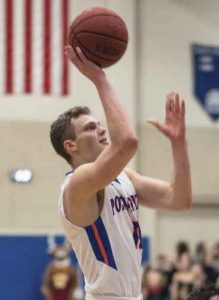 It was an eventful winter for Pomona-Pitzer sports as Sagehens swept the SCIAC tournament championships in men’s and women’s basketball and dominated the conference once again in swimming and diving.
It was an eventful winter for Pomona-Pitzer sports as Sagehens swept the SCIAC tournament championships in men’s and women’s basketball and dominated the conference once again in swimming and diving. The men’s and women’s swimming and diving teams also swept the SCIAC championships for the second time in as many years. The women went on to place seventh at the NCAA championships, with the men taking 11th overall. The teams combined to end the year with 20 All-Americans.
The men’s and women’s swimming and diving teams also swept the SCIAC championships for the second time in as many years. The women went on to place seventh at the NCAA championships, with the men taking 11th overall. The teams combined to end the year with 20 All-Americans.



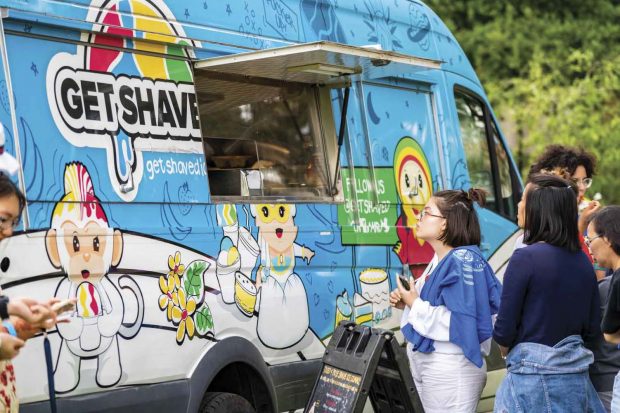
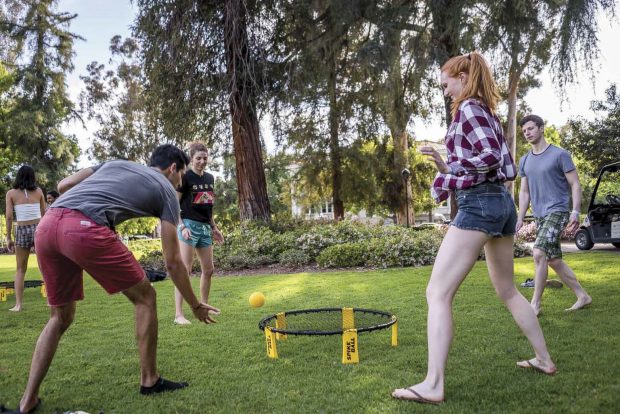

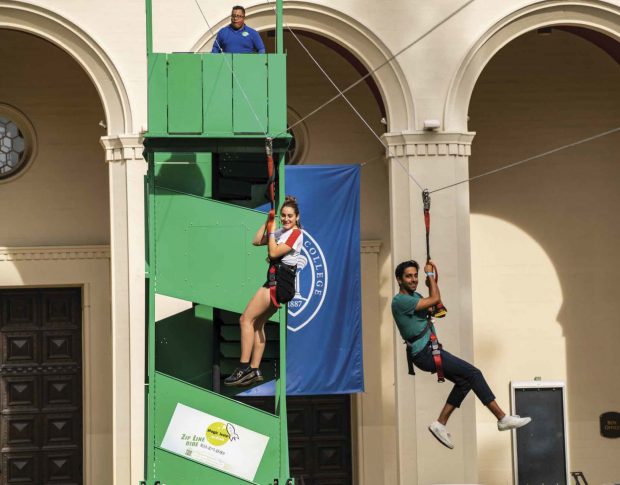

 Grow up listening to your mother share stories of studying ballet in Hong Kong—and how she had to give up a career in dance to support her family.
Grow up listening to your mother share stories of studying ballet in Hong Kong—and how she had to give up a career in dance to support her family. Own a DVD of the American Ballet Theatre’s 1977 production of “The Nutcracker” starring Mikhail Baryshnikov and Gelsey Kirkland and watch it over and over.
Own a DVD of the American Ballet Theatre’s 1977 production of “The Nutcracker” starring Mikhail Baryshnikov and Gelsey Kirkland and watch it over and over. Begin to study ballet at age 13—an “extremely late” start. Decide to be home-schooled for high school courses in order to allow time to study ballet intensely at a small ballet academy.
Begin to study ballet at age 13—an “extremely late” start. Decide to be home-schooled for high school courses in order to allow time to study ballet intensely at a small ballet academy. In addition to home-schooling, attend your local community college part time and take almost enough math classes to get an associate’s degree in the subject.
In addition to home-schooling, attend your local community college part time and take almost enough math classes to get an associate’s degree in the subject. Participate in large competitions, like the International Ballet Competition and Prix de Lausanne, to have a chance at scholarships to ballet companies with international prestige. Learn from both your successes and your losses to work even harder.
Participate in large competitions, like the International Ballet Competition and Prix de Lausanne, to have a chance at scholarships to ballet companies with international prestige. Learn from both your successes and your losses to work even harder. Get accepted to a number of colleges—including the University of Southern California for its dance program—but choose Pomona for its small classes and close-knit community.
Get accepted to a number of colleges—including the University of Southern California for its dance program—but choose Pomona for its small classes and close-knit community. In your first year, enroll in a ballet class taught by Victoria Koenig, director of the Inland Pacific Ballet dance company. Get invited to audition and dance in productions of “The Nutcracker” two years in a row.
In your first year, enroll in a ballet class taught by Victoria Koenig, director of the Inland Pacific Ballet dance company. Get invited to audition and dance in productions of “The Nutcracker” two years in a row.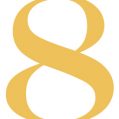 Take general chemistry courses and find a supportive mentor in Professor of Chemistry Roberto Garza-López, who attends a performance of “The Nutcracker” to see you dance.
Take general chemistry courses and find a supportive mentor in Professor of Chemistry Roberto Garza-López, who attends a performance of “The Nutcracker” to see you dance.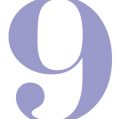 Spend your first two summers on campus, thanks to grants from Pomona and the Howard Hughes Medical Institute (HHMI), conducting computational chemistry research for Garza-López.
Spend your first two summers on campus, thanks to grants from Pomona and the Howard Hughes Medical Institute (HHMI), conducting computational chemistry research for Garza-López.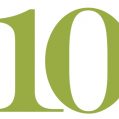 As a co-author, see your data published in Chemical Physics Letters: X, a peer-reviewed chemistry journal, during your junior year while starting rehearsals for a production of “The Little Mermaid.”
As a co-author, see your data published in Chemical Physics Letters: X, a peer-reviewed chemistry journal, during your junior year while starting rehearsals for a production of “The Little Mermaid.”


 The real charm of Andalucía lies in its countryside, featuring blindingly white mountain villages (the so-called pueblos blancos) and endless olive and almond groves. Infamous for its scalding summers, Andalucía is equally renowned for its mild springs, the perfect season for enjoying the countryside the way it is meant to be enjoyed: on foot. The southernmost tip of Andalucía greets its visitors with whitewashed splashes on its craggy hillsides and minarets reshaped into Christian bell towers. Herds of wild bulls roam the upland pastures, pigs root for acorns under isolated oak trees, and Egyptian vultures soar overhead. Hike by day and enjoy village life by night in the midst of a week-long festival leading up to holiest of Christian holidays: Easter. What better way to appreciate the uniqueness of the southwesternmost corner of Europe?
The real charm of Andalucía lies in its countryside, featuring blindingly white mountain villages (the so-called pueblos blancos) and endless olive and almond groves. Infamous for its scalding summers, Andalucía is equally renowned for its mild springs, the perfect season for enjoying the countryside the way it is meant to be enjoyed: on foot. The southernmost tip of Andalucía greets its visitors with whitewashed splashes on its craggy hillsides and minarets reshaped into Christian bell towers. Herds of wild bulls roam the upland pastures, pigs root for acorns under isolated oak trees, and Egyptian vultures soar overhead. Hike by day and enjoy village life by night in the midst of a week-long festival leading up to holiest of Christian holidays: Easter. What better way to appreciate the uniqueness of the southwesternmost corner of Europe?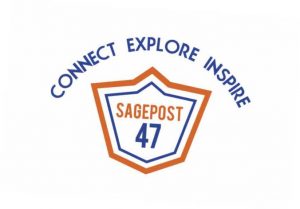 Have you checked out SagePost47, Pomona’s online platform that bridges the gap between students and alumni by fostering one-on-one connections and mentorships? Founded by an alumnus and a student in 2014, SagePost47 has grown to feature 100-plus alumni mentors, blogs, panel events and mock interviews. Learn more and sign up today at
Have you checked out SagePost47, Pomona’s online platform that bridges the gap between students and alumni by fostering one-on-one connections and mentorships? Founded by an alumnus and a student in 2014, SagePost47 has grown to feature 100-plus alumni mentors, blogs, panel events and mock interviews. Learn more and sign up today at 




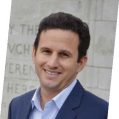

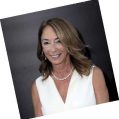
 Seeking your next spring novel and a way to connect with fellow Sagehens? Join the Pomona College Book Club on Goodreads to chat with alumni, professors, students, parents and staff around a common love of reading. Visit
Seeking your next spring novel and a way to connect with fellow Sagehens? Join the Pomona College Book Club on Goodreads to chat with alumni, professors, students, parents and staff around a common love of reading. Visit 
 Scott Kratz ’92 was having breakfast with a good friend, who at the time was director of D.C.’s Office of Planning, when he asked an offhand question about all the construction going on with an old bridge over the Anacostia River. To his surprise, Harriet Tregoning began to lay out her dream for transforming that old span into a park.
Scott Kratz ’92 was having breakfast with a good friend, who at the time was director of D.C.’s Office of Planning, when he asked an offhand question about all the construction going on with an old bridge over the Anacostia River. To his surprise, Harriet Tregoning began to lay out her dream for transforming that old span into a park.